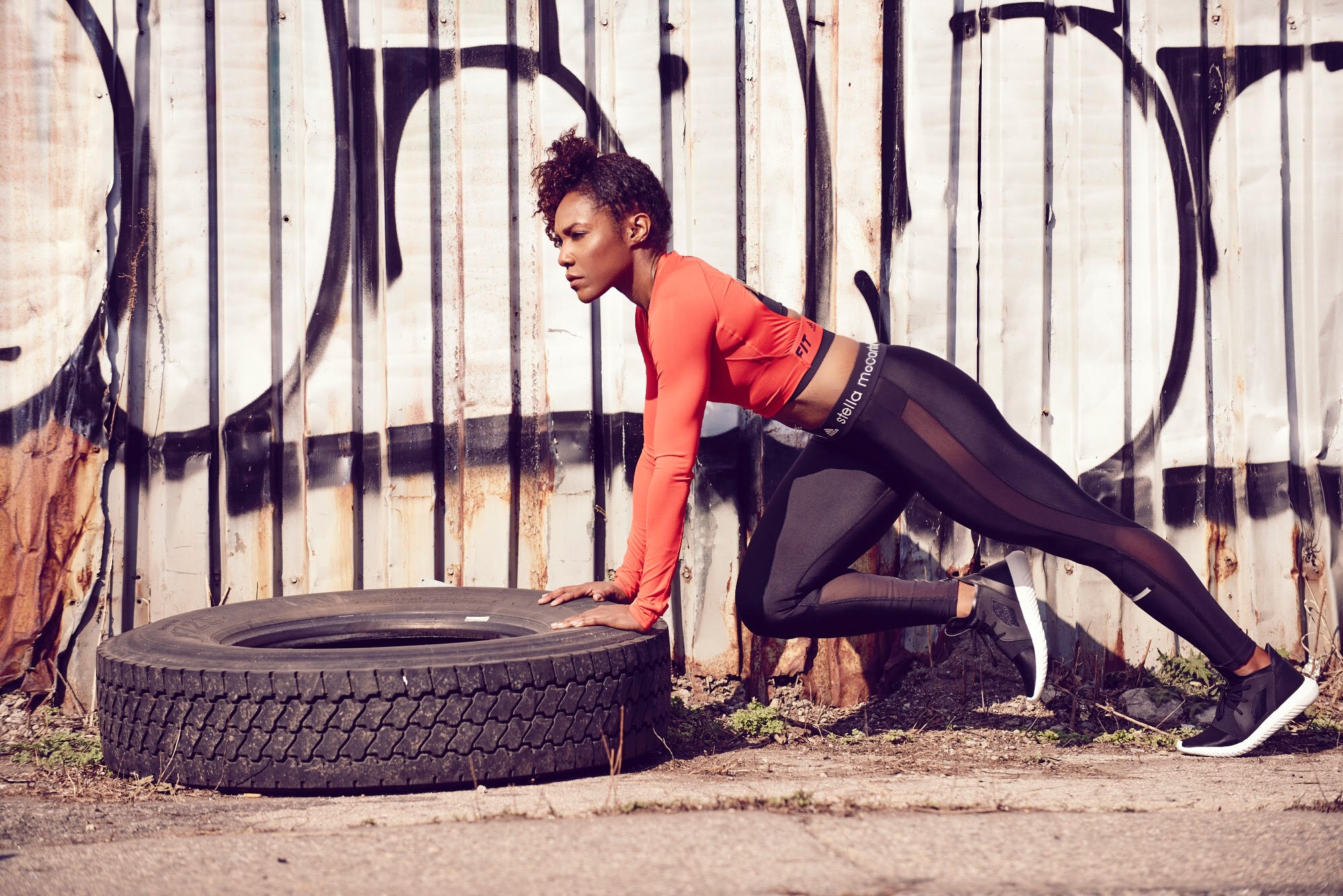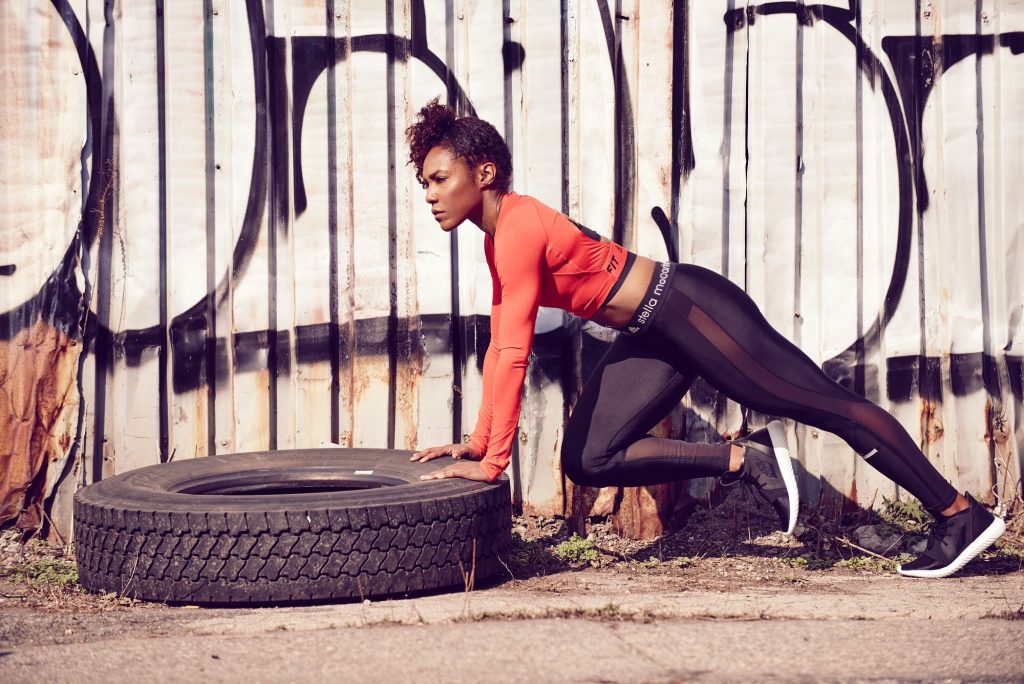I know all too well how annoying and painful muscular imbalances (when one muscle basically overpowers and strong arms another) can be. Nearly every major muscle in your body has a corresponding muscle group that carries out the opposite function–I call them “sister muscles.” When two sisters/muscles work together properly the result is outstanding. So lets identify those weaknesses so you can get back balanced and strong from head to toe. Here are the main sister pairs to know and how to make them a true dynamic duo.
How You Got Out Of Whack In The First Place
Everyday habits have a way of tricking our bodies into abnormalities that ultimately represent themselves as pain. The number one complaint that most of my clients have when they start training with me is, “I have a bad back.” However after a proper assessment and multiple sweat fests together they realize what I already knew all along: their back was fine once their core came to the party. So how does this apply to you?
Sitting at your desk for ungodly hours a day, repetitive workouts (that same spin class you have been taking 5 day a week for 3 years), and even your shoe addiction (those skyscraper heels) all threaten the natural/sister partnership of your muscles. And like any team, when there’s a weak link, others have to compensate.
Why You Ought To Take Back Your Alignment
Muscular imbalance are not only painful and annoying, but they are also aesthetically unpleasing. Harsh but true. Muscular imbalances often lead to poor posture and poor posture can wreak havoc on your figure. Here’s the deal – for instance, tight hip flexors can tilt your hips forward and give the look of a stomach pooch. Also, in addition to this, muscular imbalances are like bullies. When one muscle gets out of whack and off track it often times ends up recruiting other muscles too. So if not corrected, that pain in your back can easily morph into pain in the shoulder, knee or even shin.
Common Imbalance #1: Chest vs Back
When your chest and upper back muscles are balanced you naturally stand taller and look leaner. However since most of us work at desks where we round over for hours, the muscles in our chest are tight while the muscles in our backs are weak. Sound like you? Well try this simple test and see: Lie on your back with your hands by your side and your palms face up. Then, raise your arms overhead until they touch the floor. If your back arches when you do this then this is the imbalance you are going to want to fix.
Here’s how: Bent over rows. This exercise will strengthen your upper back and stretch your chest at the same time. Start in a standing hinge position- bending at the waist, chest toward the floor and neck neutral. Hold a pair of dumbbells at arm’s length. Raise them to your chest and then lower. Think superwoman chest while the shoulder blades squeeze together to hold a million dollar check. Do 12-15 of these.
Common Imbalance #2: Calves vs Shins
If you just picked up running and are noticing that shin splints keep interrupting your workoutflow then your 6 inch heels may be to blame. Rocking heels 24/7 keeps your feet flexed at all times. This weakens your shins and can shorten your calf muscles. Think your shins are strong and you are exempt diva?
Try this: Stand with your back against a wall and your heels about a foot from the wall. Lift your toes as high as you can and then release. Do this 15-20 times as quick as you can. If you start slowing down towards the end then you are going to want to strengthen and stretch your calf muscles a bit more. Simple calf raises can do the trick for the strength, and can work wonders for your lower leg when coupled with this stretch: Stand an arm’s length from the wall. Bend your front knee while lengthening your back leg straight behind you. Keep the knee straight and heel on the floor for 30 seconds. Switch legs and repeat.
Common Imbalance #3: Quadriceps vs. Hamstrings
Sorry ladies, I have some sad news. Due to the natural makeup of our bodies, ie. wider hips, our quadricep muscles (the ones in the front of our legs) tend to overpower our hamstrings (the ones in the back). However finding the proper balance between these sister muscles can lead to less lower body injury, faster running speeds and overall leg power. Test things out down below by standing in front of a chair that is about a foot from the wall (facing the wall).
Now you stand in between the chair and the wall (your toes should be six inches from the wall. Keep your feet hip width apart and squat into the chair. If you have to tap the wall for balance then your quads are running the game. Don’t fret though lady, stability ball leg curls can do the trick for your hamstrings. Start lying on the floor with your calves on the stability ball. Raise your hips, then pull the ball toward you. Return to start and repeat 10-12 times. Add some standing quad stretches (balance on one foot and pull one heel up to your bottom for 30 seconds) and you will be balanced out in no time.
Common Imbalance #4: Glutes vs. Hip Flexors
Where does the power in your lower half come from? Your glutes (also known as your rump shaker). Always sitting can cause your glutes to lose strength and eventually they can even forget how to contract. Shame. No more twerking for you. This also places extra strain on your hip flexors, which in time become short and tight. And trust me, the last thing you want is tight hip flexors. This imbalance can lead to all sorts of injuries.
So lets put those hips to the test. Lie on a bench with your knees pulled into your chest. Keep holding one knee and let the other leg lower as far as possible while keeping it straight. Do both sides. If either leg doesn’t rest on the bench then those hips are tight sis. But have no fear Dear. You can rejoin the twerk team by doing some glute bridges. Lie faceup with you knees bent and feet flat on the floor. Raise your hips to the ceiling and hold for a moment before lowering. Do this 12-15 times. And when you are done stretch things out by kneeling with one foot on the floor in front of you. From there push the hips forward to feel a stretch in your hip flexors. Hold for 30 seconds. Switch legs and repeat.



No responses yet